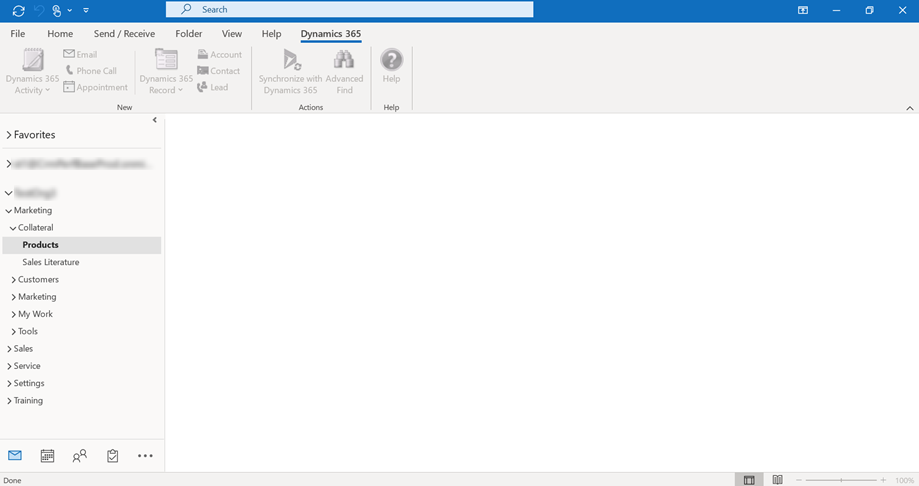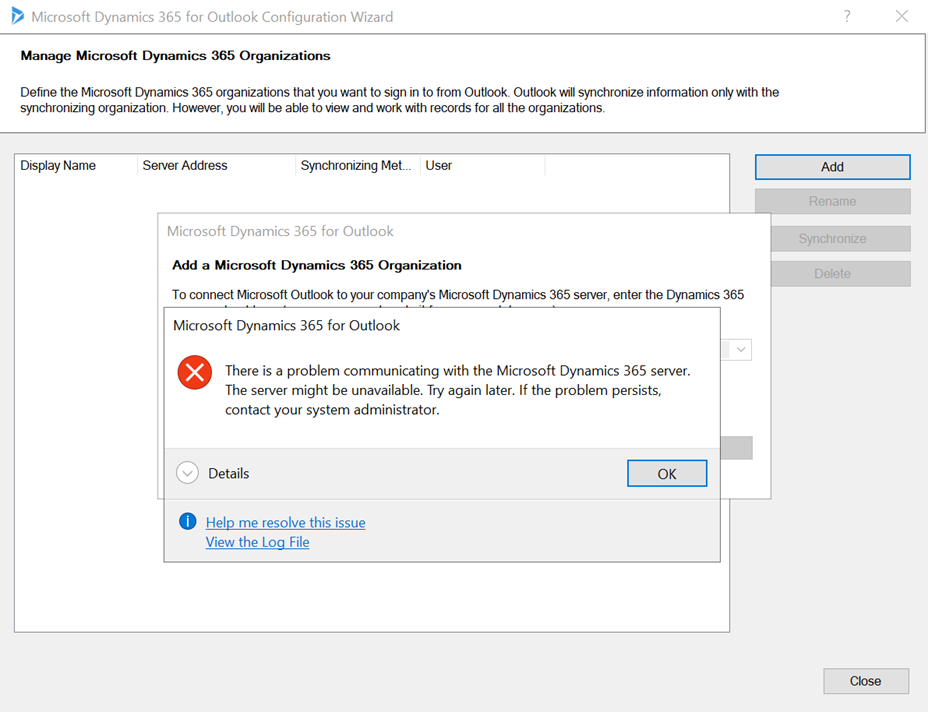Dynamics 365 for Outlook User Guide
Important
Effective October 1, 2020, the legacy Dynamics 365 for Outlook (also referred to as Outlook COM add-in) was retired. Microsoft won’t provide support or any further updates (including security and critical updates) to the Outlook COM Add-in for customer engagement apps (Dynamics 365 Sales, Customer Service, Marketing, and Field Service).
- Effective December 4, 2020, the legacy Dynamics 365 for Outlook is not available for customer engagement apps (Dynamics 365 Sales, Customer Service, Marketing, and Field Service). Use the modern Dynamics 365 App for Outlook instead.
- Dynamics 365 Customer Engagement (on-premises) users can continue to use the legacy Dynamics 365 for Outlook and will continue to receive critical security updates. However, we recommend that you transition to the modern Dynamics 365 App for Outlook at the earliest.
For further information and steps to make a smooth transition, download Dynamics 365 for Outlook (COM add-in) Playbook.
- For December 2016 Update for Dynamics 365 (online and on-premises) and later releases, the preferred way to use Microsoft Dynamics 365 together with Outlook is to use Dynamics 365 App for Outlook, a Microsoft Office add-in. More information: Dynamics 365 App for Outlook User's Guide.
- Configuring Dynamics 365 App for Outlook and Dynamics 365 for Outlook for the same Dynamics 365 user is not supported.
- When using Dynamics 365 online for Outlook version 9.0 in offline mode, attachments to synchronized records will not be available in offline mode. If there is an attachment to a record, the attachment will only be available when you are back online. If you added an attachment to a record in offline mode, the attachment will be synchronized to the server when you are back online. To use attachments in offline mode, consider saving the attachment your device.
- The offline capability in Dynamics 365 for Outlook version 9.0 isn't available in Dynamics 365 Customer Engagement (on-premises).
Dynamics 365 for Outlook is retired and removed
Starting December 4, 2020 the legacy Dynamics 365 for Outlook (also referred to as Outlook COM add-in) will be removed and users will no longer be able to use Outlook COM add-in. This removal will happen by geographic location and follows the weekly release schedule.
Once the service is removed, users need to manually uninstall the add-in. Users will be able to launch the Outlook COM add-in, however none of any features will work.
Existing Outlook COM add-in users will experience the following behavior:
Dynamics 365 ribbon is disabled.

Dynamics 365 org folders show empty pages.

You’ll not be able configure new mailboxes in Outlook COM add-in. Adding a Dynamics 365 Organization will show the below message:

Privacy notices
To use Microsoft Dynamics 365 for Outlook, you are required to sign in by using your credentials (an email address and password). You may choose to save this information locally so that you are not prompted for your credentials each time you open Outlook. If you do choose to save this information locally, Dynamics 365 for Outlook will automatically connect to Microsoft Dynamics 365 (online) every time you open Outlook.
After the first time you sign in and use Dynamics 365 for Outlook, the connection between your computer and Dynamics 365 (online) will always be open when you have access to the Internet. You may choose to turn off the connection between your computer and Dynamics 365 only by using a configuration setting, but if you do turn off the connection, Dynamics 365 for Outlook may exhibit decreased performance.
If you use Dynamics 365 for Outlook to track email, the email thread will be visible to users in your organization who have permission to view it.
For every email you receive, Dynamics 365 for Outlook will send Dynamics 365 (online) the sender’s email address, the recipient’s email address, and the subject line of the message. This allows Dynamics 365 (online) to validate whether or not a particular mail should be stored by the Dynamics 365 (online) service. When you track an item, a copy of that item will be maintained by the Dynamics 365 service and will be visible to other users in your organization who have the appropriate permissions. When you untrack an item, that copy is automatically deleted from Dynamics 365 (online) only if you own the item.
If you use Microsoft Dynamics 365 for Outlook, when you go offline, a copy of the data you are working on is created and stored on your local computer. The data is transferred from Dynamics 365 (online) to your computer by using a secure connection, and a link is maintained between the local copy and Dynamics 365 Online. The next time you sign in to Dynamics 365 (online), the local data will be synchronized with Dynamics 365 (online).
An administrator determines whether or not an organization’s users are permitted to go offline with Microsoft Dynamics 365 for Outlook by using security roles.
Users and administrators can configure which entities are downloaded via Offline Sync by using the Sync Filters setting in the Options dialog box. Alternatively, users and Administrators can configure which fields are downloaded (and uploaded) by using Advanced Options in the Sync Filters dialog box.
If you use Dynamics 365 (online), when you use the Sync to Outlook feature, the Dynamics 365 data you are syncing is “exported” to Outlook. A link is maintained between the information in Outlook and the information in Dynamics 365 (online) to ensure that the information remains current between the two. Outlook Sync downloads only the relevant Dynamics 365 record IDs to use when a user attempts to track and set regarding an Outlook item. The company data is not stored on the device.
An administrator determines whether your organization’s users are permitted to sync Dynamics 365 data to Outlook by using security roles.